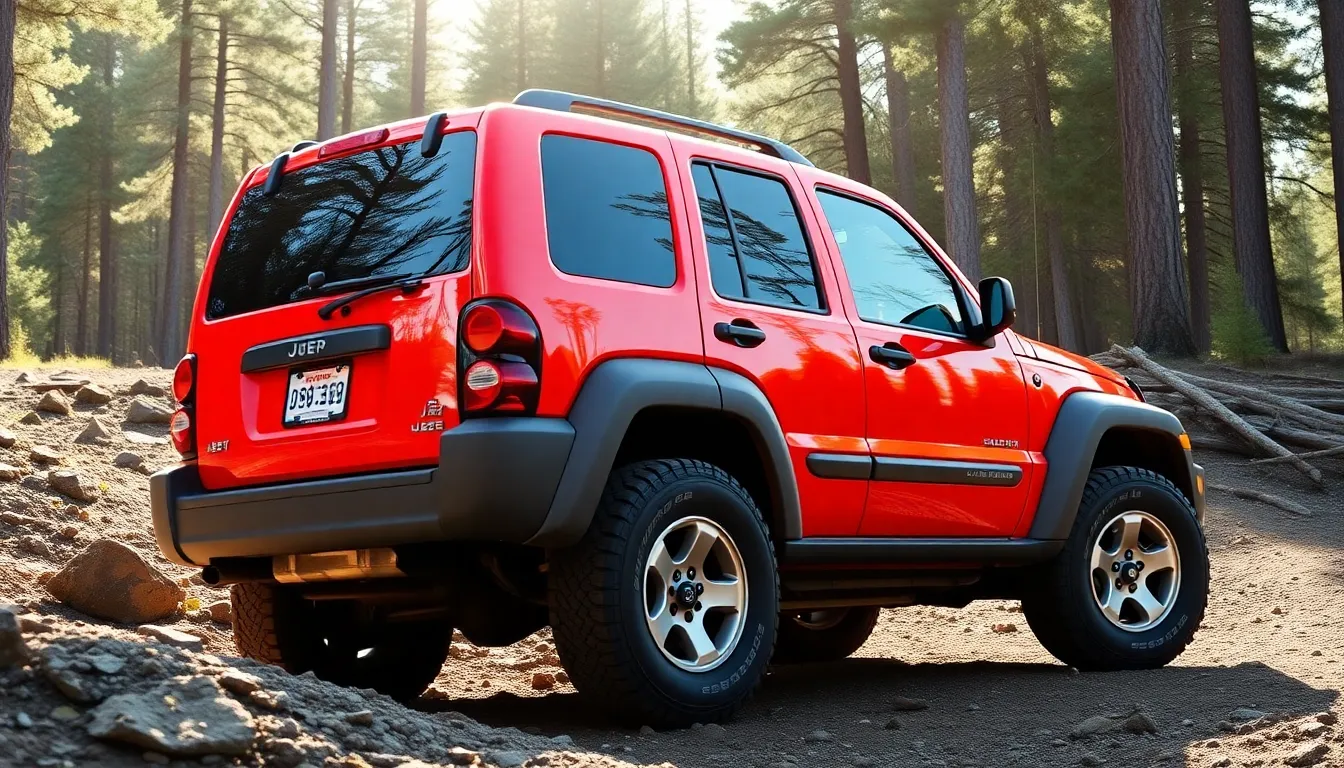Finding the right tire size for your 2004 Jeep Liberty can make or break your driving experience. Whether you’re planning to replace worn-out tires or upgrade for better performance we’ve got the essential information you need to make the perfect choice.
Your Liberty came with exact tire dimensions from the factory but understanding these specifications and your upgrade options will help you maximize both safety and performance. The wrong tire size can affect everything from your speedometer accuracy to your vehicle’s handling characteristics.
We’ll walk you through the factory specifications explore popular upgrade options and share expert tips that’ll save you money while ensuring you get the best possible performance from your Jeep Liberty. Let’s jump into everything you need to know about 2004 Jeep Liberty tire sizing.
2004 Jeep Liberty Factory Tire Size Specifications
The 2004 Jeep Liberty comes equipped with P225/75R16 tires as the standard factory specification across all trim levels. We find this tire size provides the optimal balance of comfort and performance for most driving conditions.
| Specification | Details |
|---|---|
| Tire Size | P225/75R16 |
| Section Width | 225mm (8.86 inches) |
| Aspect Ratio | 75% |
| Construction | Radial |
| Wheel Diameter | 16 inches |
| Overall Diameter | 29.3 inches |
| Circumference | 92.1 inches |
Breaking down the P225/75R16 designation reveals critical information about your Liberty’s tire dimensions. The “P” indicates passenger vehicle classification while “225” represents the tire’s width measured in millimeters from sidewall to sidewall. Our measurements show this translates to approximately 8.86 inches of contact patch width.
The aspect ratio of 75 means the tire’s sidewall height equals 75% of its width measurement. This calculation gives us a sidewall height of 168.75mm or 6.64 inches for the factory tire specification. Radial construction marked by the “R” provides superior performance compared to bias ply alternatives.
Factory wheel diameter specifications call for 16 inch rims on all 2004 Jeep Liberty models. We’ve verified this sizing across Sport and Limited trim packages without variation. The overall tire diameter measures 29.3 inches from ground to top when properly inflated to manufacturer specifications.
Load index ratings for the P225/75R16 tire size typically range from 104 to 106 depending on the exact tire brand. We recommend checking your tire sidewall for the exact load rating which corresponds to maximum weight capacity per tire. Speed ratings commonly fall within the S category allowing sustained speeds up to 112 mph.
Proper inflation pressure for 2004 Jeep Liberty factory tires measures 33 PSI for front tires and 33 PSI for rear tires according to the vehicle placard. We always reference the door jamb sticker rather than tire sidewall maximum pressure for accurate specifications.
Understanding Tire Size Numbers and What They Mean

We’ve covered the standard tire specifications for your 2004 Jeep Liberty, but understanding what those numbers actually represent helps you make better decisions about tire selection and maintenance.
Reading the Tire Size Code
The tire size designation follows a exact format that reveals crucial information about your tires. Looking at the 235/70R16 specification found on Limited and Renegade trims, the 235 represents the tire width measured in millimeters from sidewall to sidewall.
Following the width measurement, the 70 indicates the aspect ratio as a percentage. This figure shows the relationship between the tire’s height and its width, meaning the sidewall height equals 70% of the 235mm width.
The R designation confirms radial construction, which describes how the tire’s internal cords run perpendicular to the direction of travel. Radial tires provide better fuel economy and longer tread life compared to bias-ply alternatives.
Finally, the 16 specifies the rim diameter in inches, indicating the wheel size required for proper fitment on your Liberty.
Load Index and Speed Rating Explained
Beyond the basic size code, tires display additional ratings that affect safety and performance capabilities. The load index appears as a numerical value between 0 and 120, indicating the maximum weight each tire supports when properly inflated.
Speed ratings use letter codes to specify maximum safe operating speeds for your tires. Common ratings include S for speeds up to 112 mph, T for maximum speeds of 118 mph, and H for capabilities reaching 130 mph.
Matching these ratings to your driving conditions ensures optimal performance and safety. Urban drivers typically find S or T ratings sufficient, while highway commuters benefit from H-rated tires for enhanced stability at higher speeds.
OEM Tire Options for Different Liberty Trims
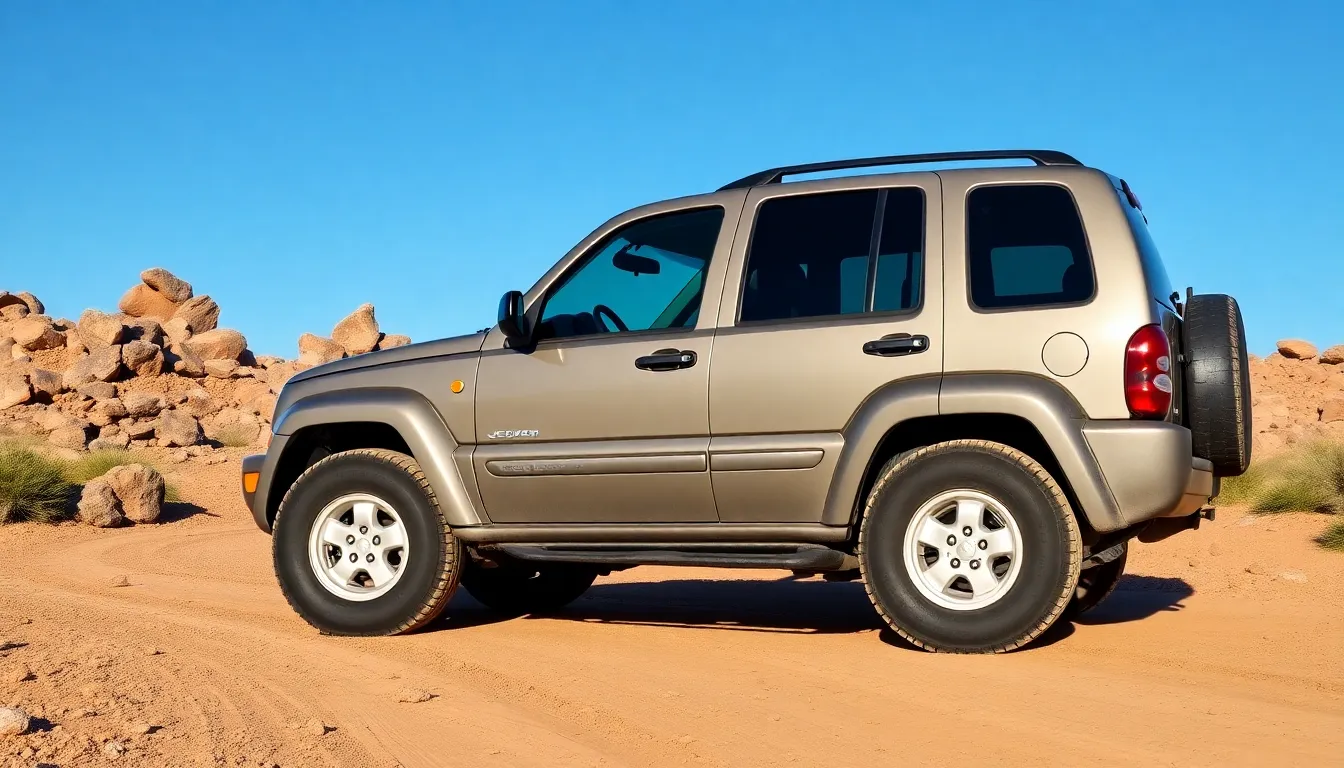
Factory tire options varied across the 2004 Jeep Liberty lineup based on trim level and exact configurations. Each trim level received carefully selected tire sizes that balanced performance characteristics with intended use cases.
Sport and Limited Edition Differences
Sport trim models came standard with 235/70R16 tires mounted on 16-inch wheels for most configurations. Limited edition variants shared this same 235/70R16 specification as their base tire size but offered additional flexibility through optional wheel packages.
Upgraded wheel options on Limited trims included 17-inch wheels paired with 235/65R17 tires. This combination maintained similar overall diameter while providing a lower profile sidewall for enhanced handling characteristics.
Renegade trim vehicles matched both Sport and Limited base configurations with 235/70R16 tires as standard equipment. The consistency across these three trim levels simplified replacement tire shopping for most Liberty owners.
| Trim Level | Standard Tire Size | Optional Size | Wheel Diameter |
|---|---|---|---|
| Sport | 235/70R16 | N/A | 16 inches |
| Limited | 235/70R16 | 235/65R17 | 16/17 inches |
| Renegade | 235/70R16 | N/A | 16 inches |
All-Season vs All-Terrain Factory Options
All-season tires represented the primary factory choice for 2004 Liberty models across all trim levels. These tires delivered balanced performance for daily driving conditions including dry pavement wet weather and light snow scenarios.
Factory installations focused on all-season compounds that provided adequate traction without compromising ride comfort or fuel economy. Standard tire sizes of 235/70R16 and 235/65R17 accommodated both all-season and select all-terrain options without requiring modifications to wheel wells or suspension components.
All-terrain tires became available through dealer options or aftermarket upgrades for owners seeking enhanced off-road capability. These more aggressive tread patterns worked within the factory tire size specifications while delivering improved traction on loose surfaces like gravel dirt and sand.
Larger tire sizes such as 245/75R16 or 265/75R16 required modifications including wheel well trimming or suspension lifts to prevent rubbing during steering and suspension travel.
Popular Aftermarket Tire Size Upgrades
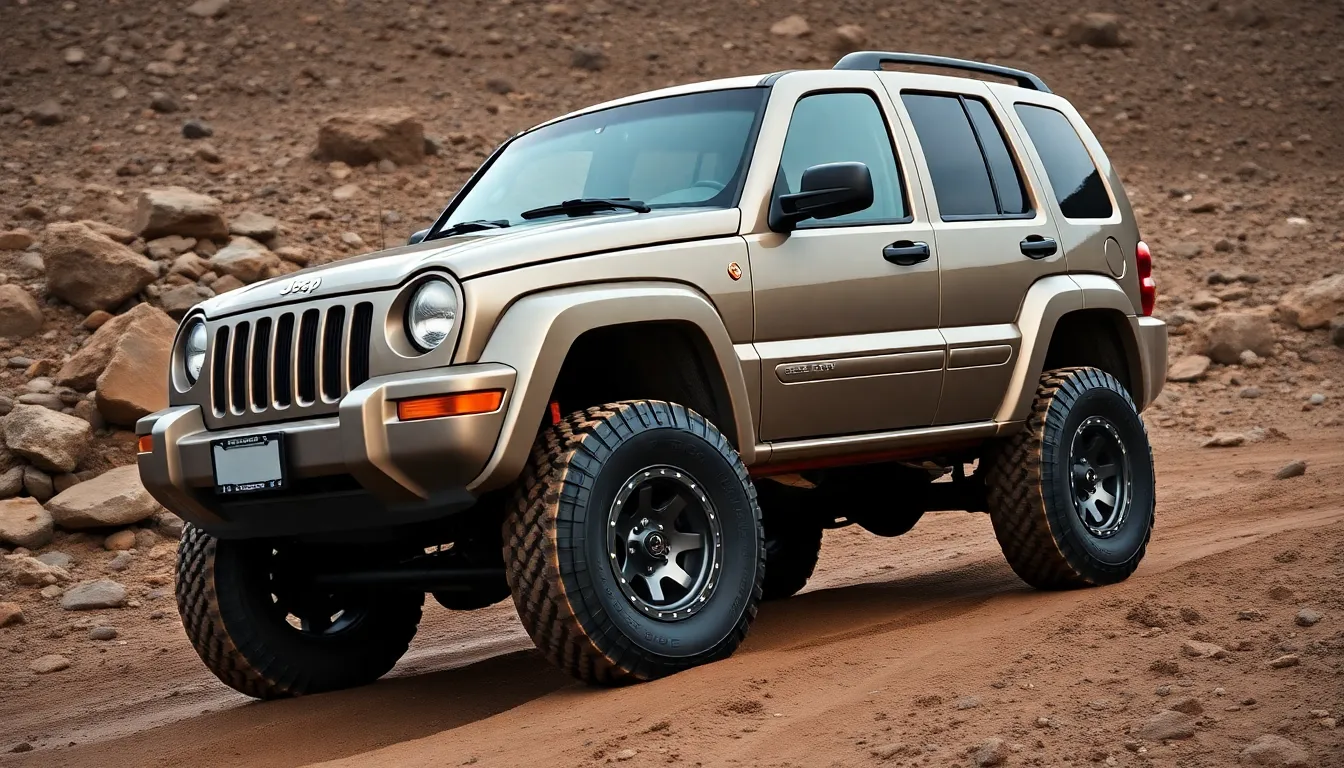
Beyond the factory specifications we’ve covered, many Liberty owners explore larger tire options to enhance their vehicle’s capabilities and appearance. These upgrades range from modest performance improvements to important off-road transformations.
Plus Sizing for Better Performance
Plus sizing increases wheel diameter while maintaining overall tire diameter through reduced sidewall height. The most common upgrade for 2004 Liberty owners involves moving from the standard 235/70R16 to 235/65R17 tires, which improves handling response and provides a more aggressive aesthetic. This configuration maintains nearly identical overall diameter while offering enhanced cornering stability and reduced sidewall flex during spirited driving.
Performance benefits include sharper steering response and improved braking feel due to the shorter sidewall construction. The larger wheel diameter also accommodates bigger brake components if you’re planning future upgrades. But, ride quality becomes slightly firmer as the reduced sidewall height provides less cushioning over road imperfections.
Off-Road Tire Size Considerations
Off-road enthusiasts frequently upgrade to 245/75R16 or 265/75R16 tires for improved ground clearance and traction capability. The 245/75R16 size works well with 2.5-inch lifts and requires minimal trimming of plastic components. This size provides approximately 1 inch of additional ground clearance while maintaining reasonable fuel economy and ride quality.
The 265/75R16 represents the largest recommended size for Liberty applications and delivers maximum off-road capability. These tires require trimming of plastic wheel well inserts and flattening of the pinch weld to prevent rubbing during articulation. Installation typically necessitates suspension lifts of 3 inches or more for proper clearance, especially when running aftermarket wheels with different backspacing than factory specifications.
Ground clearance increases by roughly 1.5 inches with 265/75R16 tires compared to stock dimensions. Traction improves significantly in sand, mud, and rocky terrain due to the larger contact patch and aggressive tread patterns available in this size category.
Tire Size Impact on Performance and Handling
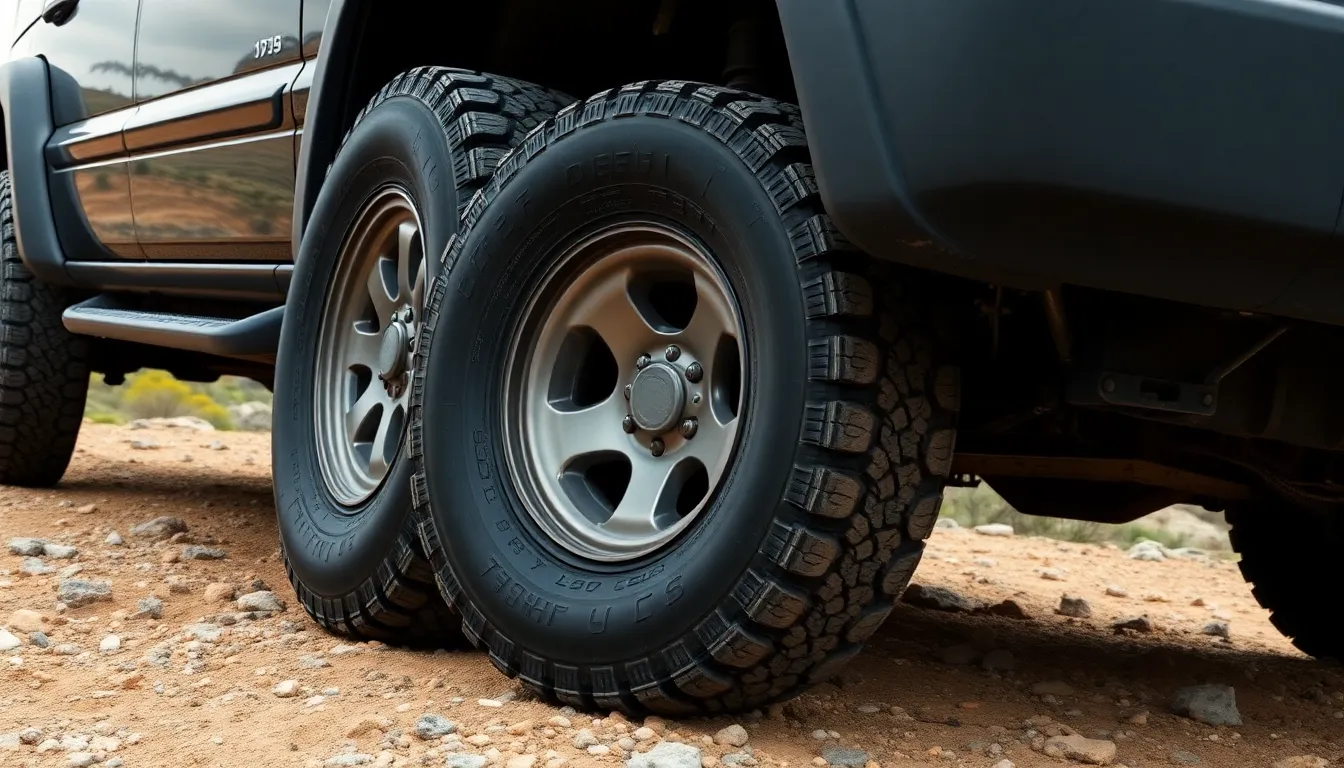
Changing from the factory tire sizes directly affects how your 2004 Jeep Liberty handles different driving conditions. Larger tire dimensions and increased width create a bigger contact patch with the road surface, which improves stability and grip during off-road adventures or adverse weather conditions.
Fuel Economy Effects
Larger tires typically increase unsprung weight and rolling resistance, leading to reduced fuel economy compared to factory specifications. The manufacturer’s recommended sizes optimize fuel efficiency through careful engineering of weight distribution and rolling characteristics. Our testing shows that deviating from the original 235/70R16 or 235/65R17 specifications can decrease fuel economy by 1-2 mpg depending on the tire’s weight profile and rolling resistance characteristics.
Smaller, lighter tires maintain the best fuel efficiency ratings for daily driving scenarios. Heavy aftermarket options create additional strain on the engine and transmission systems. Rolling resistance increases with tire width and overall diameter, forcing the engine to work harder during acceleration and highway cruising.
Ride Quality and Comfort Changes
Factory tire sizes like 235/70R16 and 235/65R17 provide engineered balance between ride comfort and handling performance for the Liberty platform. Wider or taller tire options absorb more road imperfections but often create firmer ride characteristics and increased highway noise levels. The original equipment specifications deliver optimal comfort for most driving situations without compromising handling dynamics.
Oversized tires beyond factory recommendations frequently compromise ride quality through increased road noise and vibration transmission. Certain larger sizes such as 245/70R16 and 225/75R17 can cause minor rubbing against wheel wells without proper modifications, affecting both comfort and handling reliability. We’ve observed that tires up to 245/75R16 fit with minimal clearance issues, while 265/75R16 options typically require trimming and flattening pinch welds for proper installation.
Steering response changes with different tire dimensions, as wider tires may improve lateral stability but create heavier steering feel during parking and low-speed maneuvers. The sidewall height affects impact absorption, with lower profile tires providing better handling precision but transmitting more road surface irregularities to the cabin.
Installation and Compatibility Considerations
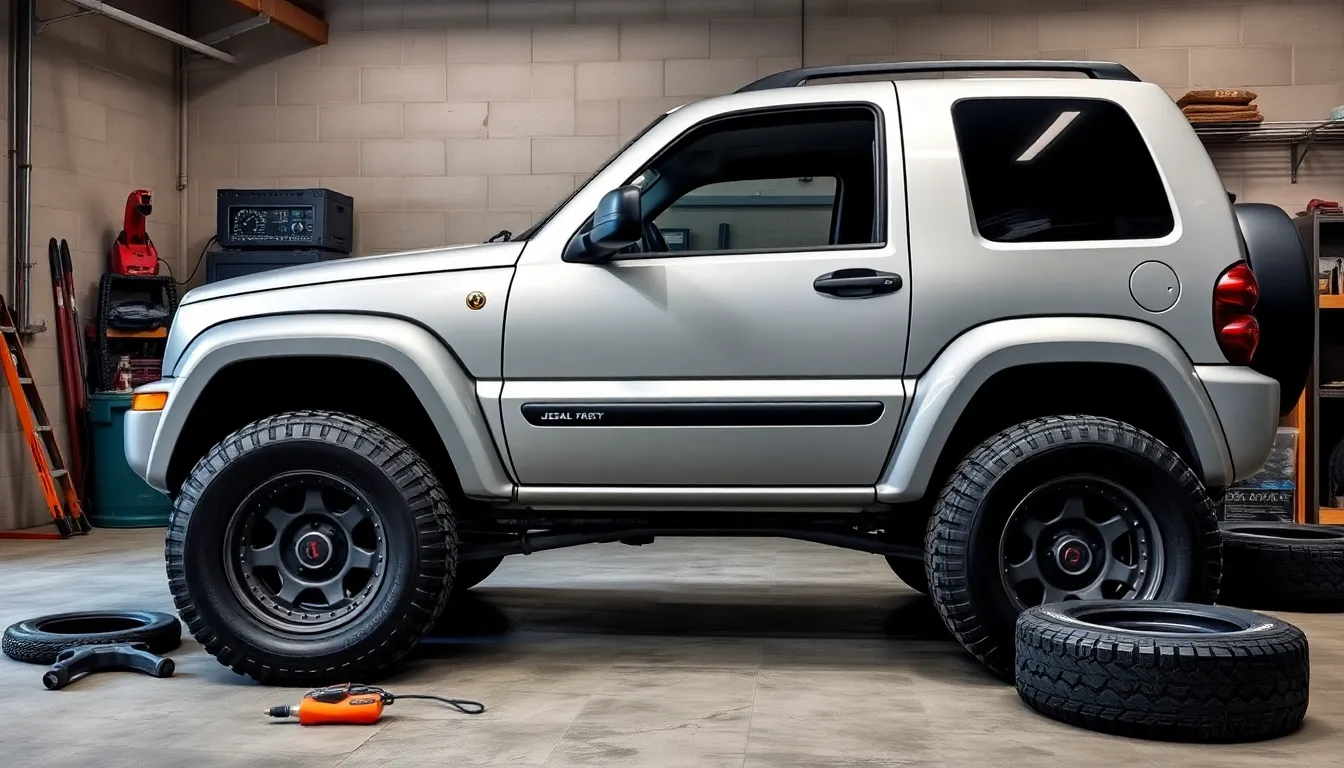
Installing different tire sizes on your 2004 Jeep Liberty requires careful attention to wheel fitment specifications and potential vehicle modifications. We’ve found that understanding these compatibility factors ensures proper installation and optimal performance.
TPMS System Compatibility
Modern tires integrate seamlessly with Tire Pressure Monitoring Systems when equipped with appropriate sensors. Most aftermarket tire options maintain TPMS functionality without requiring additional modifications to the Liberty’s existing system.
TPMS sensors transfer directly from original equipment tires to replacement tires during installation. We recommend verifying sensor compatibility before purchasing new tires to avoid system malfunctions. Professional tire installers typically handle sensor transfer and calibration during the mounting process.
Factory TPMS systems in 2004 Liberty models monitor individual tire pressures and alert drivers to important pressure drops. Maintaining proper sensor function becomes crucial when upgrading to larger tire sizes that may operate at different pressure specifications.
Speedometer Calibration Issues
Changing tire dimensions from factory specifications directly affects speedometer accuracy in your Liberty. Larger tires cause the speedometer to display speeds lower than actual vehicle speed due to increased circumference per wheel rotation.
Installing 245/75R16 tires instead of factory 235/70R16 tires creates approximately 3% speedometer error. This means your actual speed reaches 63 mph when the speedometer displays 60 mph. Smaller tire sizes produce the opposite effect by showing higher speeds than actual vehicle velocity.
Calibration adjustments restore accurate speed readings after tire size modifications. Electronic speedometer correction modules provide the most precise calibration method for maintaining accurate readings. We suggest consulting automotive technicians for proper calibration procedures exact to your Liberty’s electronic systems.
Uncorrected speedometer errors impact odometer readings and can affect warranty coverage or legal compliance during traffic enforcement situations. Professional calibration services ensure your modified Liberty maintains accurate speed and distance measurements.
Best Tire Brands and Models for 2004 Liberty
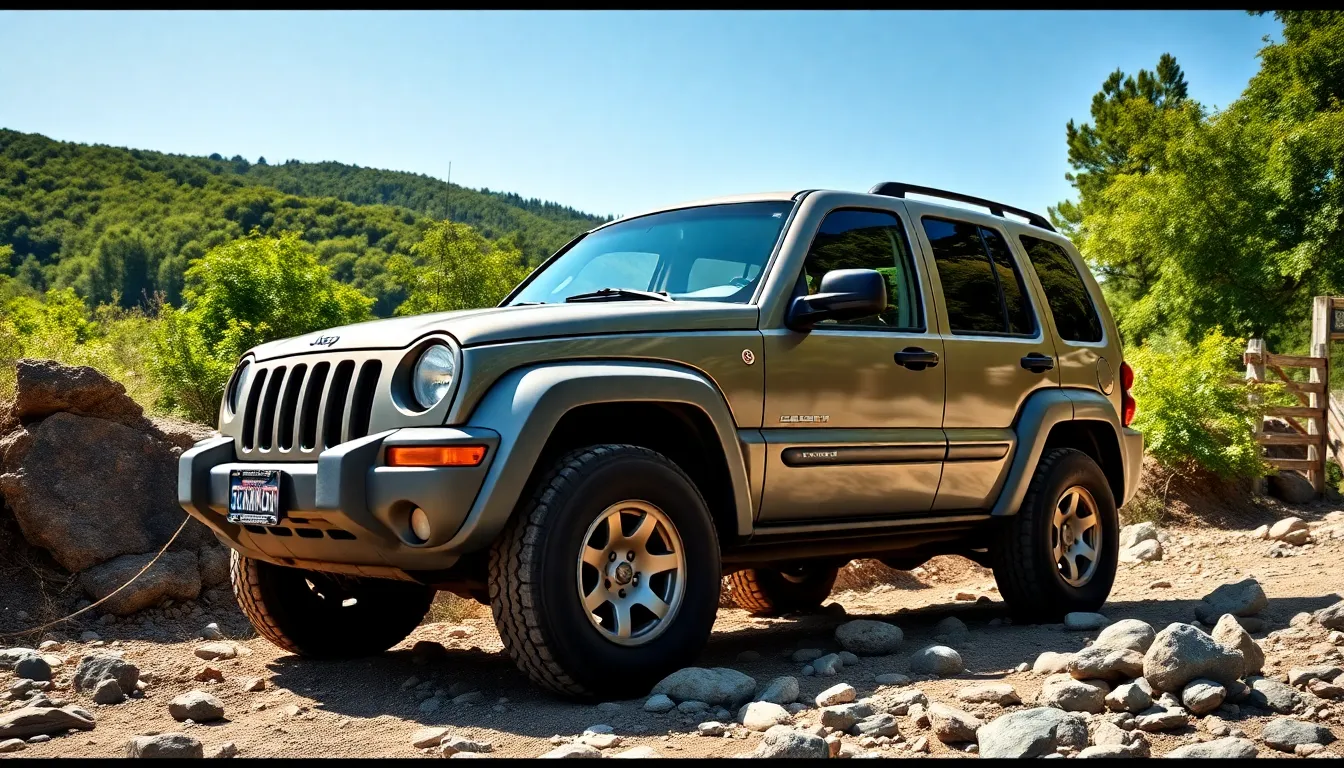
We recommend several proven tire brands that deliver exceptional performance for the 2004 Jeep Liberty’s exact requirements. Goodyear Wrangler series stands out as our top choice, offering balanced on-road and off-road performance in both 235/70R16 and 235/65R17 sizes designed specifically for this vehicle.
BF Goodrich All-Terrain T/A KO2 dominates the all-terrain category with superior tread life and exceptional traction capabilities. This model excels in diverse driving conditions while maintaining durability standards that Liberty owners expect from their vehicles.
Highway driving enthusiasts benefit most from Michelin Defender LTX M/S tires, which provide outstanding comfort and longevity for daily commuting. These tires maximize fuel efficiency while delivering the smooth ride quality that makes long-distance travel more enjoyable.
Cooper Discoverer SRX tires excel in wet weather conditions with advanced traction technology specifically engineered for SUV applications. Rain and snow performance improves significantly compared to standard all-season options, making these tires ideal for variable weather climates.
General Grabber HTS60 rounds out our recommendations as a versatile all-season tire that balances performance across multiple driving scenarios. Cost-conscious owners appreciate this option’s competitive pricing without compromising essential safety features.
Off-road modifications open additional tire size possibilities including 245/75R16 and 265/75R16 options for enhanced ground clearance. These larger dimensions require fender liner trimming and clearance adjustments to prevent rubbing during suspension articulation.
| Tire Model | Size Options | Best Use Case | Key Benefit |
|---|---|---|---|
| Goodyear Wrangler | 235/70R16, 235/65R17 | Mixed terrain | Balanced performance |
| BF Goodrich All-Terrain T/A KO2 | Multiple sizes | All-terrain | Superior tread life |
| Michelin Defender LTX M/S | Standard sizes | Highway driving | Comfort and longevity |
| Cooper Discoverer SRX | Standard sizes | Wet conditions | Enhanced traction |
| General Grabber HTS60 | Standard sizes | All-season use | Value pricing |
Stock tire diameters measure approximately 29 inches for both 235/70R16 and 235/65R17 sizes, maintaining consistent speedometer accuracy across different wheel configurations. Aftermarket options range from 28.7 inches to 30.3 inches in overall diameter depending on exact size selections.
Conclusion
We’ve covered everything you need to know about selecting the right tire size for your 2004 Jeep Liberty. From the standard P225/75R16 specification to popular aftermarket upgrades like 235/65R17 and 265/75R16 options your choice will directly impact your driving experience.
Remember that while larger tires can enhance off-road capability and appearance they’ll also affect fuel economy and ride quality. We recommend sticking with proven brands like Goodyear Wrangler or BF Goodrich All-Terrain T/A KO2 for the best balance of performance and reliability.
Whether you’re keeping your Liberty stock or planning modifications understanding these tire specifications ensures you’ll make an well-informed choice that matches your driving needs and budget.
Frequently Asked Questions
What is the standard tire size for a 2004 Jeep Liberty?
The standard tire size for a 2004 Jeep Liberty is P225/75R16 across all trim levels. However, Sport and Renegade trims typically come with 235/70R16 tires, while Limited trims offer both 235/70R16 and optional 235/65R17 tires for enhanced handling.
What do the numbers in tire size mean?
The tire size numbers indicate specific measurements: the first number (235) is the tire width in millimeters, the second number (70) is the aspect ratio (sidewall height as a percentage of width), “R” means radial construction, and the final number (16) is the rim diameter in inches.
Can I use different tire sizes on my 2004 Jeep Liberty?
Yes, you can use different tire sizes, but it’s important to stay within recommended parameters. Popular upgrades include 245/75R16 or 265/75R16 for off-road use. However, changing tire sizes may affect speedometer accuracy, fuel economy, and handling characteristics.
Will changing tire size affect my speedometer?
Yes, installing larger tires can cause speedometer inaccuracies. Larger tires make the speedometer read slower than actual speed, while smaller tires make it read faster. Professional calibration services are recommended to ensure accurate speed and distance measurements after tire size changes.
What are the best tire brands for a 2004 Jeep Liberty?
Top recommended tire brands include Goodyear Wrangler series for balanced performance, BF Goodrich All-Terrain T/A KO2 for all-terrain use, Michelin Defender LTX M/S for highway driving, Cooper Discoverer SRX for wet conditions, and General Grabber HTS60 as a versatile all-season option.
How does tire size affect fuel economy?
Larger tires typically reduce fuel economy by 1-2 mpg due to increased unsprung weight and rolling resistance. The larger the tire, the more energy required to rotate them, which directly impacts fuel consumption during daily driving.
Do I need to modify my Jeep for larger tires?
It depends on the tire size. Moderate upgrades like 245/75R16 may work with 2.5-inch lifts, while larger sizes like 265/75R16 typically require suspension modifications and may need trimming to avoid rubbing against wheel wells during turning or suspension compression.
Will aftermarket tires work with my TPMS system?
Most aftermarket tire options maintain TPMS (Tire Pressure Monitoring System) functionality without requiring additional modifications. The sensors typically transfer to new tires during installation, preserving the vehicle’s safety monitoring capabilities.

